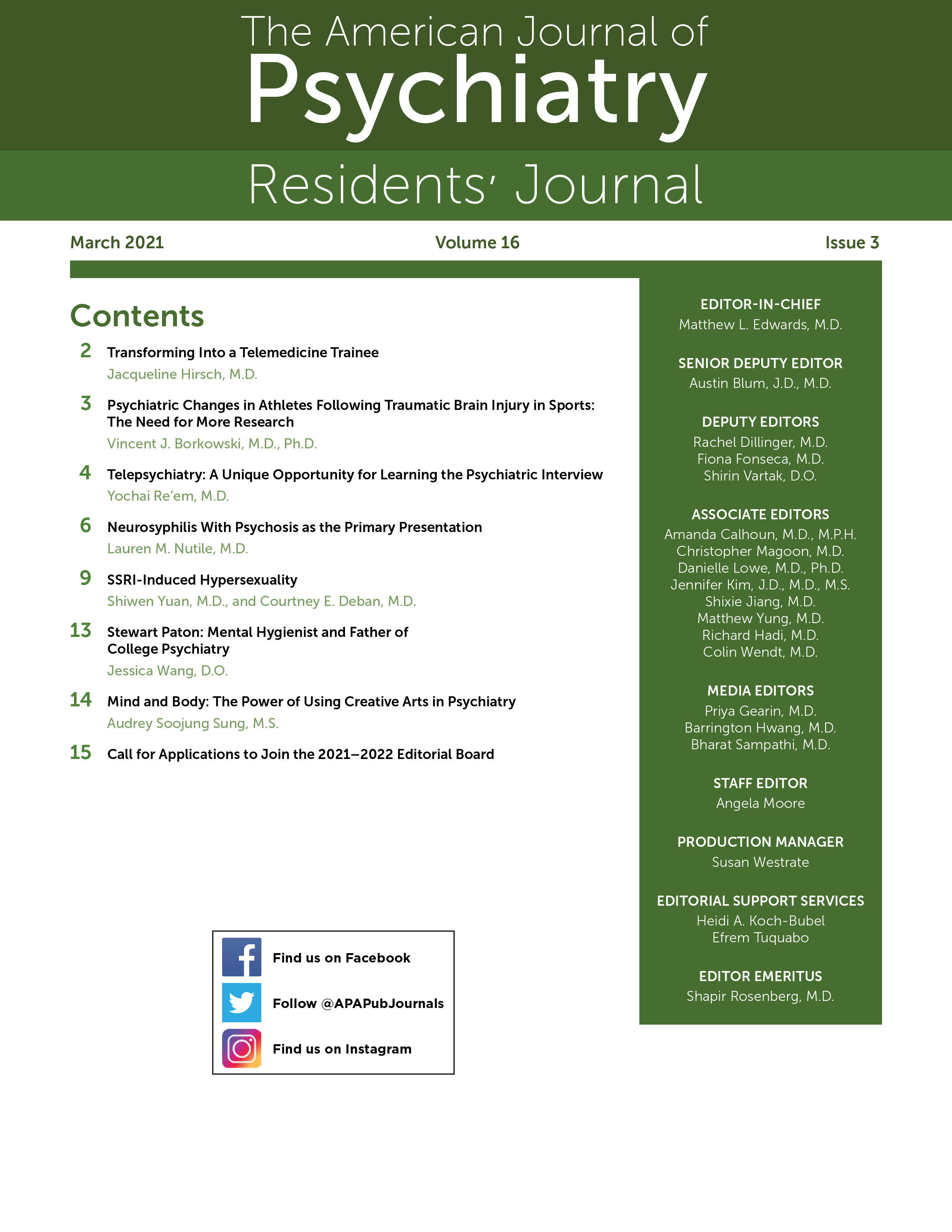Mind and Body: The Power of Using Creative Arts in Psychiatry
"I want to remind everyone that when you're out there on the dance floor, just focus on expressing yourself," said Anna Banana Freeze, my first breakdancing (culturally known as breaking) teacher. I was a 21-year-old college student, mesmerized by her confidence and style. In her dance crew's T-shirt and skinny jeans, she taught us one of her favorite moves: a bridge where she used her hands to lift her body up from a supine position. Once I executed this move, I felt an instant connection to dance. I loved transforming my thoughts and feelings into something physical. Now, as a 28-year-old medical student, my love for breaking remains strong. When I'm stiff and tired from the rigorous hours of studying, I go out into the dark, empty hallways of my school to put on some music and dance alone. The familiar rhythm of the movements lifts my mood and energizes my body.
What draws me to dance is the same as what draws me to psychiatry: the mind-body connection. As an aspiring psychiatrist, I'm interested in understanding how dance, as well as other creative arts, can help in the treatment of patients. A systematic review of 27 randomized clinical trials found that creative arts therapies—including music, dance, and other forms of art—significantly reduced anxiety and depression and increased quality of life in patients with cancer (1). In addition, dance significantly reduced anxiety and depression in patients with schizophrenia, autism, and cardiovascular disease, as shown in a meta-analysis of 41 controlled intervention studies (2). This research highlights the importance of the creative arts in the healing process—something I knew to be true from my own experience.
During my outpatient psychiatry experience, I moved beyond the symptom checklist to explore patients' understanding of their own mental health, stressors, and ways of coping. For example, I worked with one teenage patient with major depressive disorder who used journaling to process the death of his cousin. Inspired by his story, I realized that I wanted to help patients heal not only through traditional methods, such as medications, but also through the creative arts. In The Gift of Therapy: An Open Letter to a New Generation of Therapists and Their Patients (3), psychiatrist Irvin Yalom shared an example of how he and his patient, a creative writer, wrote and shared summaries of each therapy hour. Through this creative collaboration, Dr. Yalom gained a deeper understanding of his patient's experience during therapy. Although he initially believed that she appreciated his psychological interpretations of her experiences in their sessions, the patient actually valued small actions, such as compliments on her writing or laughter at her satirical comments. Like Dr. Yalom, I want to incorporate creative arts as a way to better understand patients in clinical practice—for example, by asking interested patients to do exercises where they can play a song or dance in order to express their emotions.
As a medical student, I have often felt overwhelmed by the intense training, anxious over presentations, and disappointed in my mistakes. In those moments, I turn to dance. I groove to the beat and confidently freeze with a strong stance, remembering the example of my college dance teacher. It is important for everyone, especially patients with mental illnesses, to have outlets that can enhance their well-being. That's where the creative arts come in: to help people use their bodies to explore, communicate, and manage their emotions.
1. : Effects of creative arts therapies on psychological symptoms and quality of life in patients with cancer. JAMA Intern Med 2013; 173:960–969 Crossref, Google Scholar
2. : Effects of dance movement therapy and dance on health-related psychological outcomes: a meta-analysis update. Front Psychol 2019; 10:1806 Crossref, Google Scholar
3. : The Gift of Therapy: An Open Letter to a New Generation of Therapists and Their Patients. New York, HarperCollins, 2002 Google Scholar



